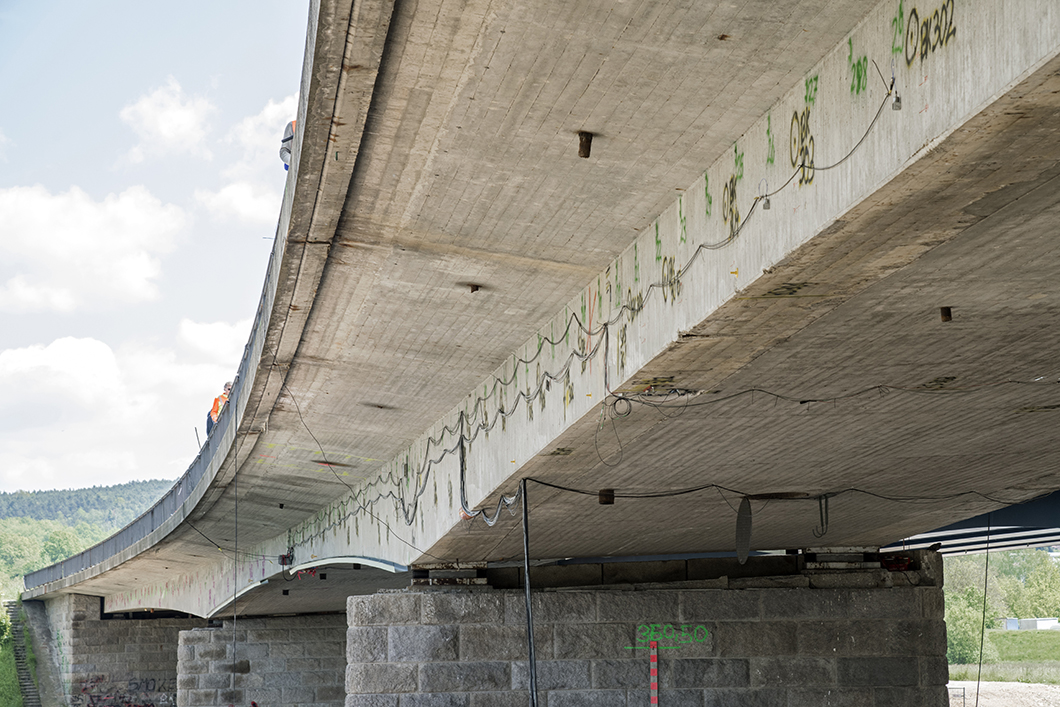
The investigated prestressed concrete bridge constructed in the 1960s
Source: BAM
The demand for assessments of existing structures remains continuously high. Besides the natural ageing of the built environment and the accompanying degradation, many structures are subjected to new requirements. With regard to our infrastructure, increasing traffic loads frequently lead to significantly higher stresses than the structure was exposed to at the time of construction. The recalculation, i.e. the computational reliability assessment of older bridges, is a highly topical challenge for both engineering offices working in practice and for science. Compared to the design of new structures, a significant advantage is the chance to conduct investigations on-site at the structure in order to acquire additional knowledge about the current condition and to observe possible deviations from the initially assumed characteristics of the structure. The incorporation of such measured information into the recalculation then facilitates a more realistic assessment of a structure. This, in turn, is the basis for the purposeful planning of measures and actions (such as use restrictions, maintenance, or even the replacement of the structure) meeting the demands. In this way, infrastructural availabilities and the consumption of resources in general can be optimized.
With an eye towards the increasing traffic loads and the unsatisfactory condition of several bridges, additional damage to the structure caused by on-site inspections should be avoided as far as possible. Therefore, one aim of our research is to establish non-destructive testing as an additional sound and reliable source of information for the recalculation. The article by Stefan Küttenbaum and co-authors demonstrates the recent results using a prestressed concrete bridge as a case-study. It is shown that ultrasonic echo and ground penetrating radar methods can provide valuable information about relevant structure parameters.
An important part of the developed methodology for the NDT-supported reliability assessment is the calculation of measurement uncertainties. Measurements are conducted to generate knowledge. The measurement uncertainty should be understood as a comparable measure describing the quality of this knowledge. Once this uncertainty has been determined, the measured and quality-evaluated information can be used in structural assessment. This increases the engineer’s power of judgment and enables a more realistic assessment of existing structures in which actual structural properties are appreciated.
Bewertung von Bestandsbauwerken mit gemessenen Daten - Teil 2: Berechnung der Tragwerkszuverlässigkeit unter Einbeziehung der ZfP-Messergebnisse
Reassessment of existing structures based on measured data - Part 2: Structural reliability analyses using NDT results
Stefan Küttenbaum, Stefan Maack, T. Braml, A. Taffe, T. Strübing
published in Beton- und Stahlbetonbau, 116, H. 3, S. 183–199, 2021
BAM, Division Non-destructive Testing Methods for Civil Engineering


